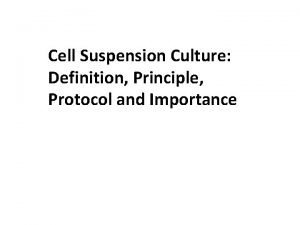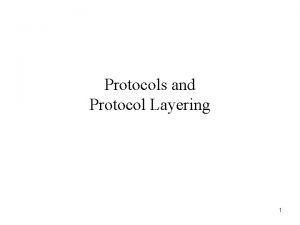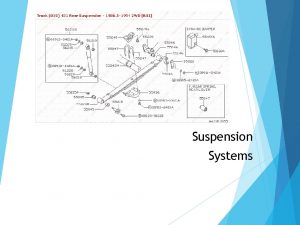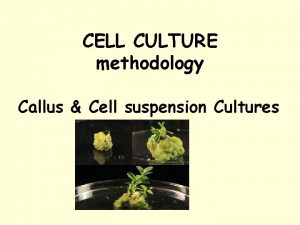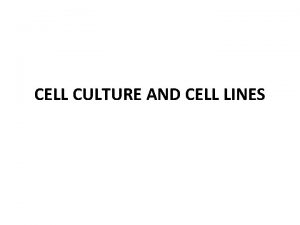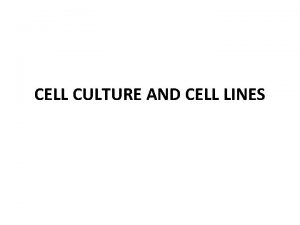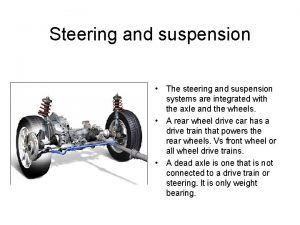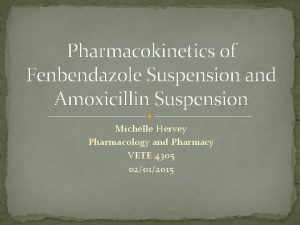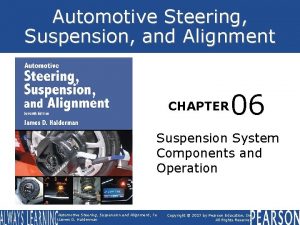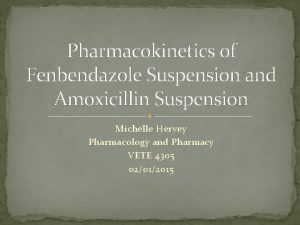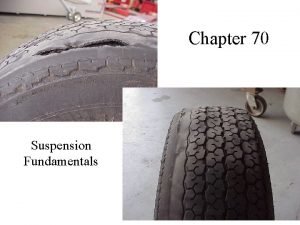Cell Suspension Culture Definition Principle Protocol and Importance





















- Slides: 21

Cell Suspension Culture: Definition, Principle, Protocol and Importance

• Definition: • Suspension culture is a type of culture in which single cells or small aggregates of cells mul tiply while suspended in agitated liquid medium. It is also referred to as cell culture or cell suspen sion culture.

• Principle: • Callus proliferates as an unorganised mass of cells. So it is very difficult to follow many cellular events during its growth and develop mental phases. To overcome such limitations of callus culture, the cultivation of free cells as well as small cell aggregates in a chemically de fined liquid medium as a suspension was initi ated to study the morphological and biochemi cal changes during their growth and developmen tal phases.

• To achieve an ideal cell suspension, most commonly a friable callus is transferred to agitated liquid medium where it breaks up and readily disperses. After eliminating the large cal lus pieces, only single cells and small cell aggre gates are again transferred to fresh medium and after two or three weeks a suspension of actively growing cells is produced.

• This suspension can then be propagated by regular sub culture of an aliquot to fresh medium. Ideally suspension cul ture should consist of only single cells which are physiologically and biochemically uniform. Al though this ideal culture has yet to be achieved, but it can be achieved if it is possible to synchro nize the process of cell division, enlargement and differentiation within the cell population. • The culture of single cells and cell aggregates in mov ing liquid medium can be handled as the culture of microbes. The suspension culture eliminates many of the disadvantages ascribed to the cal lus culture on agar medium. Movement of the cells in relation to nutrient medium facilitates gaseous exchange, removes any polarity of the cells due to gravity and eliminates the nutrient gradients within the medium and at the surface of the cells.

• Protocol: 1. Take 150/250 ml conical flask containing autoclaved 40/60 ml liquid medium (Fig 4. 1). 2. Transfer 3 4 pieces of pre established callus tissue (approx. wt. 1 gm. each) from the culture tube using the spoon headed spat ula to conical flasks. 3. Flame the neck of conical flask, close the mouth of the flask with a piece of allumini um foil or a cotton plug. Cover the closure with a piece of brown paper. 4. Place the flasks within the clamps of a ro tary shaker moving at the 80 120 rpm (rev olution per minute) 5. After 7 days, pour the contents of each flask through the sterilized sieve pore diameter 60µ 100µ and collect the filtrate in a big sterilized container. The filtrate contains only free cells and cell aggregates.

6. Allow the filtrate to settle for 10 15 min. or centrifuge the filtrate at 500 to 1, 000 rpm and finally pour off the supernatant. 7. Re suspend the residue cells in a requisite volume of fresh liquid medium and dispense the cell suspension equally in several ster ilized flasks (150/250 ml). Place the flasks on shaker and allow the free cells and cell aggregates to grow. 8. At the next subculture, repeat the previous steps but take only one fifth of the residual cells as the inoculum and dispense equally in flasks and again place them on shaker. 9. After 3 4 subcultures, transfer 10 ml of cell suspension from each flask into new flask containing 30 ml fresh liquid medium. 10. To prepare a growth curve of cells in sus pension, transfer a definite number of cells measured accurately by a haemocytometer to a definite volume of liquid medium and incubates on shaker. Pipette out very little aliquot of cell suspension at short intervals of time (1 or 2 days interval) and count the cell number. Plot the cell count data of a passage on a graph paper and the curve will indicate the growth pattern of suspension culture.


Types of Cell Suspension Culture: • Batch • Continuous

• Type # 1. Batch Culture: • Batch culture is a type of suspension cul ture where the cell material grows in a finite vol ume of agitated liquid medium. • For instance, cell material in 20 ml or 40 ml or 60 ml liquid me dium in each passage constitute a batch culture. Batch suspension cultures are most commonly maintained in conical flasks incubated on orbital platform shakers at the speed of 80 120 rpm.

• Slowly Rotating Cultures: • Single cells and cell aggregates are grown in a specially designed flask, the nipple flask. Each nipple flask possesses eight nipple like pro jections. The capacity of each flask is 250 ml. Ten flasks are loaded in a circular manner on the large flat disc of a vertical shaker (Fig 4. 3). When the flat disc rotates at the speed of 1 2 rpm, the cell within each nipple of the flask are alternately bathed in culture medium and ex posed to air.


• Shake Cultures: • It is a very simple and effective system of suspension culture. In this method, single cells and cell aggregates in fixed volume of liquid me dium are placed in conical flasks. Conical flasks are mounted with the help of clips on a hori zontal large square plate of an orbital platform shaker. The square plate moves by a circular motion at the speed of 60 180 rpm


• Spinning Cultures: • Large volumes of cell suspension may be cultured in 10 L bottles which are rotated in a culture spinner at 120 rpm at an angle of 45° • Stirred Culture: • This system is also used for large scale bat ch culture (1. 5 to 10 litres). In this method, the large culture vessel is not rotated but the cell sus pension inside the vessel is kept dispersed con tinuously by bubbling sterile air through culture medium. The use of an internal magnetic stirrer is the most convenient way to agitate the culture medium safely. The magnetic stirrer revolves at 200 600 rpm. The culture vessel is a 5 to 10 litres round bottom flask (Fig 4. 6).


• Continuous Culture System: • This system is very much similar to stirred culture. But in this system, the old liquid me dium is continuously replaced by the fresh liquid medium to stabilize the physiological states of the growing cells. Normally, the liquid medium is not changed until the depletion of some nutri ents in the medium and the cells are kept in the same medium for a certain period. • As a result active growth phase of the cell declines the de pletion of nutrient. In continuous culture system, nutrient depletion does not occur due to contin uous flow of nutrient medium and the cells al ways remain in the steady state of active growth phase.

• Chemostats: • In this system, culture vessels are generally cylindrical or circular in shape and possess inlet and outlet pores for aeration and the introduc tion of and removal of cells and medium. The liquid medium containing the cells is stirred by a magnetic stirrer. The introduction of fresh ster ile medium, which is pumped in at a constant rate into the vessel is balanced by the displace ment of an equal volume of spent or old medium and cells. • Such a system can be maintained in a steady state so that new cells are produced by division at a rate which compensates the number lost in the outflow of spent medium. Thus in a steady state condition the density, growth rate, chemical composition and metabolic activity of the cells all remain constant. Such continuous cultures are ideal for studying growth kinetics and the regulation of metabolic activity in higher plants (Fig 4. 7). •


• Turbidostats: • The turbidity of a suspension culture me dium changes rapidly when the cells increase in number due to their steady state growth. The changes of turbidity of the culture medium can be measured by the changes of optical density of the medium. • Again, the p. H of the medium changes due to increase of cell density. In turbidostates, an automatic monitoring unit is con nected with the culture vessel and such unit ad justs the medium flow in such a way as to main the optical density or p. H at a chosen, preset level. •

• • Importance of Cell Suspension Culture: The culture of single cells and small aggre gates in moving liquid medium is an important experimental technique for a lot of studies that are not correctly possible to do from the callus culture. Such a system is capable of contributing many significant information’s about cell physiol ogy, biochemistry, metabolic events at the level of individual cells and small cell aggregates. It is also important to build up an understanding of an organ formation or embryoid formation start ing from single cell or small cell aggregates. The technique of plating out cell suspension on agar plates is of particular value where attempts are being made to obtain single cell clones. Sus pension culture derived from medicinally impor tant plants can be studied for the production of secondary metabolites such as alkaloids and a considerable amount of industrial effort is being placed on the exploitation and expansion of this area. Mutagenesis studies may be facilitated by the use of cell suspension cultures to produce mutant cell clones from which mutant plants can be raised. Cell population in a suspension can be subjected to a range of mutagenic chemicals e. g. ethyl methane sulphonate (EMS), N nitroso N methyl urea etc. The mutagens can be added directly in the liquid medium. After the muta gen treatment, cells are plated on agar medium for the selection of mutant cell clones. The hope is that permanent changes in the DNA patterns of some of the cells would be achieved by such treatments. Plants could be raised from the mu tant cell clones and the mutant plants are se lected from the population either by morpholog ical differences or by metabolic/biochemical dif ferences. The selected plants can then be grown on and propagated further to produce a mutant population for evaluation studies.
 Slowly rotating culture
Slowly rotating culture Suspension therapy is a type of
Suspension therapy is a type of Relativism
Relativism Fed-batch
Fed-batch Difference between american culture and indian culture
Difference between american culture and indian culture Stab and stroke culture
Stab and stroke culture Folk culture and popular culture venn diagram
Folk culture and popular culture venn diagram How does popular culture diffuse
How does popular culture diffuse Tsi
Tsi Homework due today
Homework due today Stroke culture method
Stroke culture method Carpet culture microbiology
Carpet culture microbiology Surface culture deep culture and esol
Surface culture deep culture and esol Protocol layering
Protocol layering Individual culture traits combine to form culture patterns.
Individual culture traits combine to form culture patterns. Batch culture vs continuous culture
Batch culture vs continuous culture Individualistic culture vs. collectivist culture
Individualistic culture vs. collectivist culture Sub culture group
Sub culture group Adaptive culture from inert culture
Adaptive culture from inert culture Quality culture changing hearts minds and attitudes
Quality culture changing hearts minds and attitudes Culture conditioning
Culture conditioning Curture
Curture
